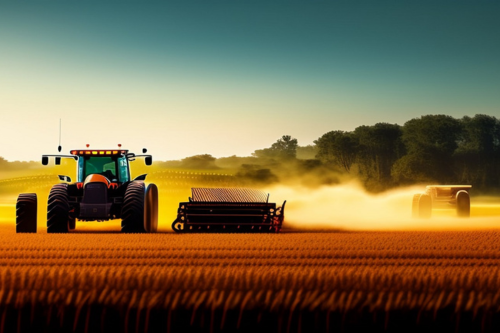According to the Department of Agriculture, COVID hits the deer population and is likely to spread widely among the white-tailed deer population during the pandemic.

Officials said they sampled more than 11,000 deer and detected the virus in 12% of them. However, researchers found antibodies from the virus in 31% of the deer, meaning they were previously infected.
The agency says that the virus was transmitted from humans to deer before mutating. Officials believe the deer could have transmitted the mutated virus back to humans.
“Deer regularly interact with humans and are commonly found in human environments — near our homes, pets, wastewater, and trash,” said Dr. Xiu-Feng Wan. A professor at the University of Missouri who participated in the research. “The potential for SARS-CoV-2, or any zoonotic disease, to persist and evolve in wildlife populations can pose unique public health risks”. This research is helping us better understand how a disease that can affect both people and animals is spreading and evolving in the real world, and better equipping us to deal with future infectious disease outbreaks.” said Dr. Ria Ghai. A researcher for the Centers for Disease Control and Prevention.
Researcher finds a ‘stunning’ rate of COVID hits the deer population. Here’s what it means for humans
Between October and December of last year, researchers swabbed the noses of 93 dead deer from across Pennsylvania. Nearly a fifth of the animals tested positive for coronavirus.
This is one result from a new pair of soon-to-be-published studies with the latest evidence for coronavirus spillover from humans into wild white-tailed deer where the coronavirus picked up a raft of new mutations. Additionally, in one case, the coronavirus likely later spilled back from the deer into a human. That’s a first.
These recent discoveries, which follow a prior investigation into the coronavirus in the population of white-tailed deer, have reignited worries about the unpredictable nature of spillover occurrences and the possible risks they pose to people. Here are some inquiries being made concerning
Did Pennsylvania deer die from COVID-19?
No. The principal author of the Pennsylvania results that are currently pending evaluation is Andrew Marques. A microbiology ph.d. researcher at the University of Pennsylvania’s Perelman School of Medicine. “These are deer that died with COVID,” they claim. These were not deer that succumbed to COVID. Instead, they had been pursued or run over by a car. Marques, however, asserts that an over 20% coronavirus positivity rate is “absolutely stunning when we consider the positivity rate in humans,” which is substantially lower. For instance, the affirmative test rate in Philadelphia is currently 3% or less.
Eight of the 93 samples were of plenty quality to have their genomes sequenced, revealing which variations were present in these wild deer. Marques and his associates discovered from the findings that the lineages they had been observing appeared to have spread from humans. At a time when the delta variety was widespread among humans, some of them resembled it.
But others resembled alpha, the first variant of concern back in late 2020, “which is strange,” Marques says. The samples were gathered months after the delta variant had surged to become the dominant human strain. And that meant the alpha strain, which had largely disappeared in people, was still present in the environment — inside these deer. That’s to say, we can’t quite forget about variants no longer affecting us.
Did you say something about mutations?
Unfortunately, yes. The viral genomic sequence of several of the viruses that Marques and his colleagues detected had undergone a few dozen changes. Consider it as if you were to replace a few people in a 30,000-person march.
“Some of these people [might] play really important roles in the parade,” Marques explains. “And by changing those individuals, the parade’s movements and noises may also be altered. And we can compare that to the virus in that [a relatively small number of mutations] alter the virus’ potential for spreading.”
So how did the deer catch the coronavirus?
We don’t know for sure. Marques admits, “Everything is basically speculation at the moment.” So let’s speculate.
It’s probable that there was direct human-deer contact in some way through feeding the animals. Alternatively, it’s possible that the deer ingested human waste or untreated sewage and became infected with the coronavirus. Marques believes that this is unlikely given that the virus isn’t usually stable for prolonged times outside the body and that standard wastewater treatment would end any viral particles. Alternatively, it’s possible that the coronavirus infected a known intermediate animal host species, like a mink, feral cat, or deer mouse.

Whatever the case, the coronavirus propagated throughout the animals without a doubt as soon as it infected the deer. In fact, some deer behaviors can make it easier to spread the disease. “Deer sometimes touch noses as a form of greeting,” says Marques. Deer also exhale clouds of vapor, just like other mammals do. The coronavirus causes COVID-19, a respiratory illness in people that is spread through airborne droplets. In deer, the same is probably true.
As for symptoms, other researchers have reported that most infected deer tend not to have noticeable symptoms.
Are there any possible long-term consequences of the coronavirus in deer?
If history is any guide, the answer is yes. “I can’t think of a single zoonotic disease that has established in an animal reservoir in the wild that we have been successful in eradicating, says disease ecologist Barbara Han of the Cary Institute of Ecosystem Studies. However, she was not engaged in any of the two experiments. She claims that the work was crucial for determining human risk. The outcomes were also unsurprising to her.
According to Han, “We all share a version of that [ACE2] receptor that the virus is hijacking to get into our cells,” and this statement holds true for mammals in general and vertebrates in general. It is still challenging to tell which animals are likely to shed a lot of the virus and spread it to other people.
In fact, Han and her team used machine learning to train an algorithm to recognize the traits of a species. ACE2 receptors closely bind to the SARS-CoV-2 virus in a separate study to estimate spillover probability among 5,400 mammals. The algorithm recognized over 500 of these species, including several monkeys, bats, carnivores, and ungulates, as potential suspects.
Han claims that all of this work is essential for calculating risk. She also concerns that once we experience a spillover (as the deer did), we will stick around for a while. The fact that we now have a semipermanent reservoir species, not only in white-tailed deer but also in mink and [laboratory] deer mice, leads me to believe that we must now check how it is changing in these species and continually revise our estimates of the risk to humans. Source Information
For more Amazing and Unique information and posts, visit our Home page... If you have any suggestions or information, feel free to share them with us ….







Amazing ✅